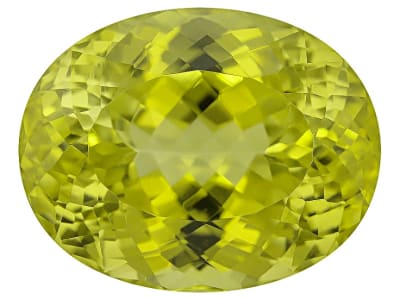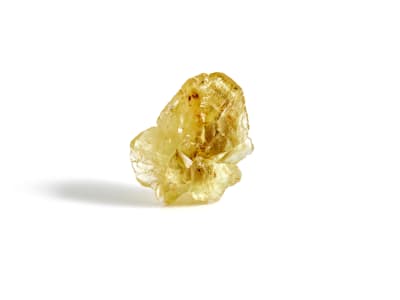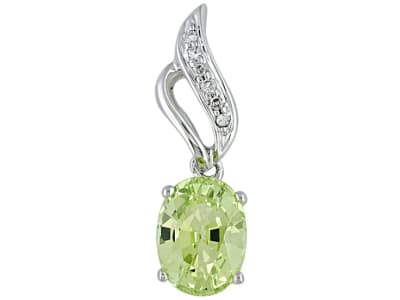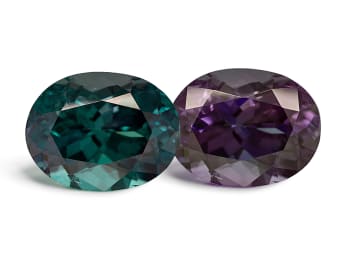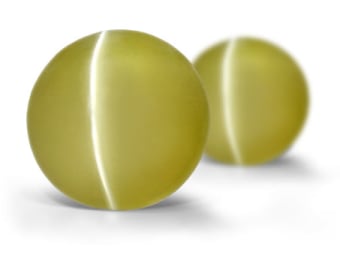Chrysoberyl is the name of a mineral as well as three different gem varieties--two of which are widely accepted as some of the most rare and valuable of all phenomenal gems. The gem commonly known as chrysoberyl is a yellowish-green, brownish-yellow, or colorless transparent to translucent mineral that is usually faceted into gems and generally considered a collector's stone. While not often set in jewelry, its characteristics make it ideal for such use. When chrysoberyl displays color-change properties, it is known as alexandrite, and when it exhibits chatoyancy, it is known as cat's eye chrysoberyl.
General Information
Tolerance:(+0.004/-0.006)
LWUV: Could be red for "mint" chrysoberyl
Chrysoberyl Colors
-
 Brown
Brown -
 Green
Green -
 White
White -
 Yellow
Yellow
Chrysoberyl Spectra
We acknowledge the significant scientific contributions of John S Harris, FGA to the study of gemstone spectra and with deep appreciation to him, acknowledges the use of his images and related notes about gemstones and their spectra in the educational materials on this website.
Alternate Names
Cymophane
Countries of Origin
Tanzania, United Republic Of; Myanmar; Afghanistan; Russian Federation; Czechia; United States of America; Madagascar; Kazakhstan; United Kingdom of Great Britain and Northern Ireland; Portugal; Austria; Sweden; Mozambique; Unknown; China; Brazil; Poland; Algeria; Bulgaria; France; Nigeria; Argentina; Niger; Sri Lanka; Japan; Ukraine; Uzbekistan; Zambia; Kenya; Switzerland; India; Spain; Canada; Norway; Namibia; Congo (the Democratic Republic of the); Finland; Italy; South Africa; Zimbabwe; Antarctica; Australia; Germany
Care
Normal Care
Species/Variety
Alexandrite
Alexandrite is the rare color-change variety of chrysoberyl.
Creation Classification
Lab Created
Lab created chrysoberyl is produced by a process called the Czochralski method. Material containing the elements that make up the mineral chrysoberyl (beryllium, aluminum, and oxygen) are melted in a platinum crucible along with elements that produce the desired color (in this case, iron). A small chrysoberyl crystal (called a seed) attached to a rod is then dipped into the melt and slowly pulled away as the crystal grows around the seed. For this reason, the Czochralski method is also known as crystal pulling. Lab created gems have the same chemical, optical, and physical properties of their natural counterparts, but are a more cost-effective alternative to a natural gem.
Optical Phenomena
Cat's Eye and Star Chrysoberyl
The term cat's-eye is used to describe a phenomenal optical property in gemstones, but when used alone it refers to the chatoyant variety of chrysoberyl. This effect appears as a bright, narrow slit similar to the light bouncing off a cat’s eye. This phenomenon is caused by needle-like inclusions and platelets, parallel to the c-axis of the stone that interfere with the passage of light through the crystal, scattering and reflecting light back to the viewer as a thin line. The American Museum of Natural History in New York City has an 85ct cat’s-eye chrysoberyl. The Smithsonian Institution in Washington DC has the 58.19ct honey color “Maharani Cat’s-Eye”. Star chrysoberyl is extremely rare and can have 4-rays or 6-rays with 90o angles between rays. The star can be due to hollow, or fluid filled channels or fibrous inclusions, rutile, and ilmenite inclusions. The Smithsonian Institution 6.65ct star chrysoberyl.
